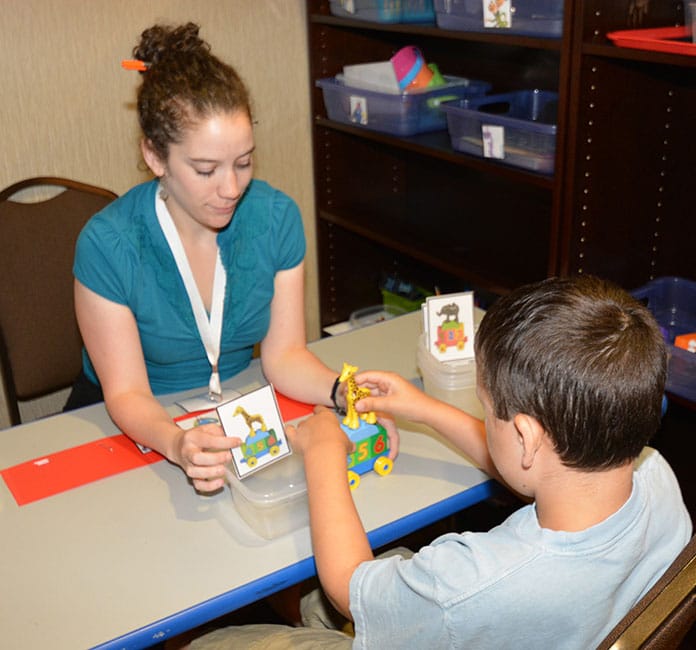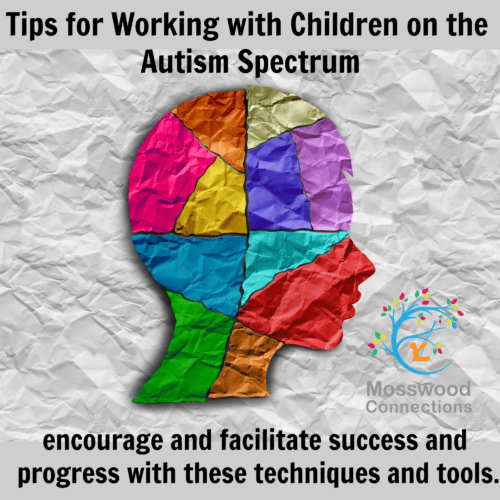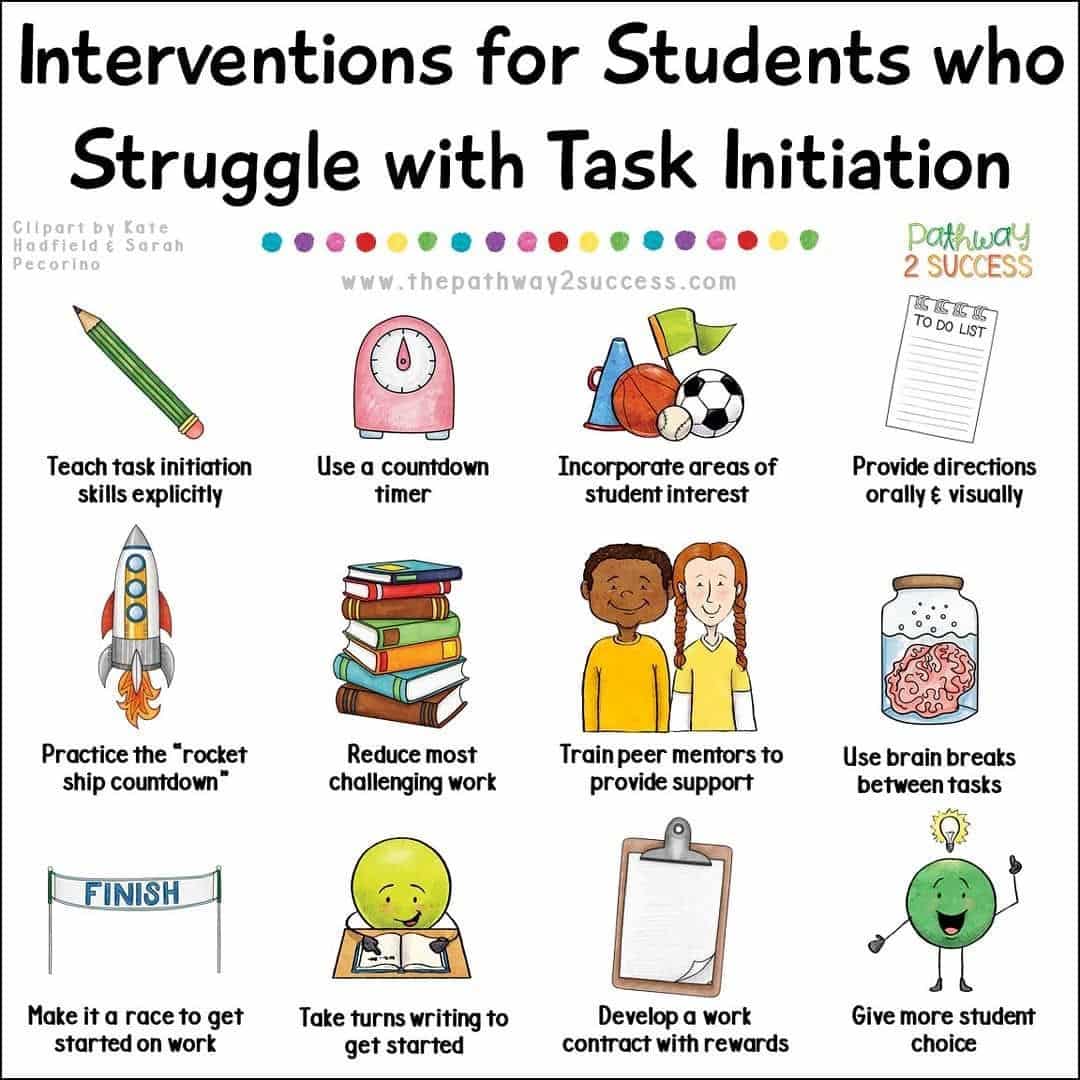Autism In The Classroom: Strategies For Success
School Community Tool Kit
- Be calm and positive. Model appropriate behavior for the student with autism, as well as for other students, by greeting him and engaging him in a respectful way.
- Be aware of the characteristics of autism and general strategies – for quick reference reminders use the resources included in this kit.
- Use the About Me information sheet to get to know relevant facts about each particular students likes, fears, needs, etc. Ask specific questions regarding safety and impulsivity. If you havent received one, ask the school team whether there is an About Me information sheet available for each student with autism in your classroom.
- Promote a welcoming environment, and provide opportunities for your student to develop social interaction skills and extended learning
- Teach understanding and acceptancesee the Resources section of this kit for suggested reading, including books and programs to use with the students.
Learn strategies for success for teachers by subject, as well as all members of the school community, in the Autism Speaks School Community Tool Kit.
Try A Smart Goal Challenge
If a student with autism is having a hard time with school, sit down with them and pick a SMART goal to work on over the next month or semester. SMART goals are an effective way to help children with autism reach their potential, and they are:
Suppose, for example, that your student with autism is having trouble learning how to recognize emotions. You could make a goal with them to practice flash cards with emotions on them every day for five minutes and for the student to recognize each card by the end of the month. As long as the SMART goal hits all of the criteria, it can help your student focus on ways to make progress.
Accommodations Protections And Rights
When the Americans with Disabilities Act was passed in 1990, it recognized that because of the special challenges people with disabilities face, they need special legal protections to ensure they are treated fairly and not taken advantage of because of their condition. What this means for ASD students is that a host of legal rights ensure that they can enjoy the same educational opportunities that other students do.
The passage of the ADA opened the door for other legislation to be enacted that helps children with disabilities. First and foremost, under the Individuals with Disabilities Education Act , autistic children are guaranteed a free and appropriate public education meaning students should have access to educational programs that best fit their special needs. Additionally, the law calls for education to be provided in the least restrictive environment, so students who have disabilities have the opportunity to learn among their counterparts who don’t have the same issues. In order to make this possible, classrooms may need to be tailored to the autistic students’ needs.
Children with autism cannot just be thrown into a traditional classroom without any accommodations if they would not be able to benefit from the instruction, Leichtweisz says. There is often a fine balance between finding the least restrictive environment and one in which children can often learn, and many times parents and schools are not in agreement.
Also Check: Adhd Delayed Sleep Phase
Find Out As Much As You Can About Autism
Learn about autism and about your students’ specific challenges and requirements. Request training and if you’re lucky enough to have had training already, share your knowledge with colleagues. Invite successful autistic role models, e.g. alumni or final year students, to share their experiences with staff. Get in touch with the experts from your university’s disability support team and discuss what further changes you can make to your teaching practice. It’s worth exploring this in depth because they may be very personal to you and your subject area.
How Do You Teach Students With Autism Spectrum

The number of students with autism is on the rise. So a deep understanding of the strategies and social skills needed to handle a class of autistic children is extremely important.
Listed are some tried and true strategies that will ensure every autistic child receives the best education possible.
These strategies apply to both the classroom and home environments.
Structure or routine is the name of the game when it comes to autism. Maintain the same daily routine, only making exceptions for special occasions. During such moments, place a distinct picture that depicts the days events in the child’s personal planner.
Design an environment free of stimulating factors:
a. Avoid playing loud background music as it makes it difficult for the autistic child to concentrate.
b. Eliminate stress because autistic children quickly pick up on negative emotions. So for example, if youre experiencing too much stress, leave the classroom until you feel better.
c. Maintain a low and clear voice when engaging the class. Students with autism get easily agitated and confused if a speaking voice is too loud.
d. Some autistic people find fluorescent lights distracting because they can see the flicker of the 60-cycle electricity. To mitigate this effect:
Place the child’s desk near the window or try to avoid using fluorescent lights altogether.
If the lights are unavoidable, use the newest bulbs you have as they flicker less.
Here are some statements you can recite on difficult days:
You May Like: What Age Is A Child Diagnosed With Autism
How Does Autism Affect Learning In School
Around 70% of children with autism spectrum disorders in the UK attend mainstream primary schools. The problem is that many mainstream schools are unequipped to provide the support that autistic children need. In fact, according to the National Autism Society and Ambitious About Autism, 60% of teachers in England do not feel that theyve received adequate training to teach children with autism.
A poor classroom environment for autism can hugely disadvantage children with the condition. Most notably, it can cause them difficulty with engaging in learning activities and coping with daily life. Whats more is that these issues can have a lasting impact on them.
This is why, as a teacher, its crucial for you to be aware of the educational implications of autism and how to adopt effective autism teaching methods. By integrating suitable autism learning styles and alleviating any discomfort in the classroom, you will enable autistic children to take part in learning more comfortably and become better prepared for their future.
How Do You Know Your Child Is Ready
Laura Phillips, a clinical neuropsychologist at the Child Mind Institute, says that a crucial factor when deciding whether your child is ready for kindergarten or not is reaching a particular developmental milestone, such as social-emotional and language development. This also includes self-regulation skills, as well as paying attention and managing their emotions.
Here are some factors to consider:
- Is the child able to share appropriately?
- Does the child have the ability to show interest in being with other children or play cooperatively?
- Does the child want to learn?
- Can the child sit and listen for an extended period?
- Is the child independent or has trouble separating themselves from their parents?
Continue Reading: Tips for Promoting Independence in Children with Autism.
You May Like: Can You Develop Autism Over Time
Teach Kids To Ask For Help
The best thing any teacher, educator, parent, or caregiver can do is teach their kids to ask for help. When working with children with autism, they may not always ask for help when they need it. This could be because they dont know they can or they dont know when its okay to talk to a teacher versus when they should be quiet. Social cues and body language are difficult for them to read. But when you explain to them when they can ask for help and give examples of why they should, it will be easier for them to manage in the classroom.
Make Directions Clear Short And Concrete
For example, if your child is throwing food at the table say, eat your food rather than Be good at the table, Dont throw your food or Would you stop with that! You are always throwing your food. For children with difficulty understanding language, showing them a picture or a visual demonstration of the behavior you want to see, can be helpful.
Also Check: Can A Child Develop Autism At A Later Age
Start Working On A New Routine
Kindergarten is the introduction to a whole new world and routine. For children with autism, it can be a nightmare of new sensations and new events. While children may eventually accept the new routine, adjusting will take time.
You can start ahead of time and create a schedule that closely resembles the one theyll follow during the school year. This way, the child will get used to it and be prepared for school.
Read: Back to School: Tips for Autism.
Board Games With A Twist
Teaching children manners can be a helpful way to boost social skills and explain the importance of being polite. This simple, but effective activity puts an etiquette-related twist on a simple game of chess, checkers, or mancala by requiring players to wish their opponent good luck or good game before and after they have played.
Read Also: Residential Housing For Autistic Adults
The 5 Best Teaching Strategies For Autism
by Shea Brogren, MOT, OTR/LNovember 05, 2019
Children with autism tend to have different learning needs when compared to their peers. They each have their own unique strengths and needs, and it’s important to be aware of these so that teaching strategies can be adapted.
In this article, we are going to dive deeper into our top five autism teaching strategies, so that you can better assist children with the learning process.
Teach Students About Historical Figures With Autism

Although the disorder wasnt discovered until the twentieth-century, people with autism have made important contributions to history, and its important to educate students about themnot just in April but throughout the year. Here are a few well-known figures who are diagnosed with or believed to have had autism to get you started:
- Emily Dickinson
You May Like: Aba Therapy For Adhd
Only Boys Can Develop Autism Girls With Autism Are Rare Or Nonexistent
While its true that boys are more likely to develop autism, girls can have this condition, too. The ratio of boys to girls with autism is estimated at around 3:1, but girls with ASD are less likely to be formally diagnosed. Some researchers have theorized that autism symptoms can be different in men and women, causing girls with ASD to be misdiagnosed or underreported.
Aim For 80 Percent Success On Goals
It may be tempting to set an important goal that a child will need to work very hard to achieve, such as using the restroom at school every day or asking questions in conversation 100 percent of the time. However, children with ASD have “off” days or times that are more challenging, and there may be situations where they will not succeed at the goal if success means 100 percent. It’s essential you redefine success as 80 percent. This is encouraging for both you and the child as it’s achievable on most developmentally appropriate goals.
You May Like: Community For Autistic Adults
Teaching Students With Autism: A Guide For Educators
Across the country, the number of children diagnosed as having autism has increased substantially and many of these students are in general education classrooms. How can general education teachers and other education professionals address their complex communication, social and learning needs?
We believe that all students deserve a great public educationand part of that experience is having access to the general curriculum and school experience.
Inclusion is not about disability, nor is it only about schools. Inclusion is about social justice. Inclusion demands that we ask, what kind of world do we want to create? Mara Sapon-Shevin, Syracuse University
In this guide, we cover areas key to building an inclusive education that sets educators and students up for success from day 1. The guide include sections on:
- collaborating with families and caregivers
A Parents Guide To Autism Treatment And Support
If youve recently learned that your child has or might have autism spectrum disorder, youre probably wondering and worrying about what comes next. No parent is ever prepared to hear that a child is anything other than happy and healthy, and an ASD diagnosis can be particularly frightening. You may be unsure about how to best help your child, or confused by conflicting treatment advice. Or you may have been told that ASD is an incurable, lifelong condition, leaving you concerned that nothing you do will make a difference.
While it is true that ASD is not something a person simply grows out of, there are many treatments that can help children acquire new skills and overcome a wide variety of developmental challenges. From free government services to in-home behavioral therapy and school-based programs, assistance is available to meet your childs special needs and help them learn, grow, and thrive in life.
When youre looking after an autistic child, its also important to take care of yourself. Being emotionally strong allows you to be the best parent you can be to your child in need. These parenting tips can help by making life with an autistic child easier.
Also Check: Can Autism Be Cured If Caught Early
How Would It Feel To Be : : : :
Next time you read a book to your class, try asking your students how it would feel to be the main character in the story. If youre reading a picture book about Cinderella, for example, you could ask how they would feel if they had two evil stepsisters who were mean to them. Or if youre reading Peter Pan as a class, you could ask them what happy memories they would think about to fly with magic pixie dust.
This can help students with autism learn empathy as well as how to see situations in their lives from another perspective. It can also teach them how to recognize emotional cues by encouraging them to put themselves in the perspective of another person.
Acknowledge Your Child Or Students For Complying With Your Requests
For instance, if your child is using a loud voice in the movie theater and you say, whisper in the theater, praise the child with a comment such as nice job whispering, or thank you for being respectful in the theater. For children who understand language well, situations like this are a good time to teach about other peoples perspectives .
Read Also: Best Adhd Medication Adults
Strategy #: Using Rewards And Incentives
Applied behavior analysis, or ABA, is a form of therapy that is used to help children with ASD manage or eliminate problem behaviors, such as behaviors that result in self-harm or disruptions to other children. One of the most widely-used treatments for children with ASD, applied behavior analysis therapy works by using rewards and incentives to reinforce positive behaviors.
Though sometimes controversial, ABA has also been proven effective for certain children by research. For example, a peer-reviewed study published in 2020 found that long-term, comprehensive ABA-based interventions were beneficial to lifelong development of children with ASD, highlighting socialization, communication and expressive language as being potentially promising targets for ABA-based interventions.
Only individuals who meet certain educational and professional requirements can become ABA therapists. However, all teachers can implement the basic ideas of ABA, such as positive reinforcement in the classroom . To explore these topics in depth, read about how teachers can use reward systems to encourage better student engagement, or explore our Master of Science in Applied Behavior Analysis, which will prepare you for a career as a Board Certified Behavior Analyst .
Some Children Thrive When Given Structured Hands

Many children I have worked with or have observed, did very well when given a hands-on/visual activity. Examples include playing a computer game, sorting objects by color or object type completing a puzzle, constructing a model car, tracing or coloring in a picture, etc. As another example, some teachers of children with autism teach academic skills through sorting tasks. For instance, an activity about learning colors would require the child to put all the yellow chips in a yellow cup, all the blue chips in a blue cup, etc. Keeping a child focused with an activity they do well at is a great way to encourage calm behavior. However, if the child is feeling overwhelmed or frustrated from the activity, allow a break or a change in the task.
Also Check: Do Autistic Babies Reach To Be Picked Up
Know Eating Can Be A Challenge
Sensory issues with certain textures and tastes, as well as differences in the way hunger might be perceived, can cause kids on the spectrum to have problems eating a regular diet. This doesn’t just affect the child during mealtimes, however. Hungry children have a harder time learning whether they have autism or are neurotypical. If the child seems more disengaged that normal, offer a snack you know he or she likes. The extra energy from the snack may help with learning.
Strategy #: Providing Appropriate Feedback For Students With Asd
Students who have ASD frequently have difficulties with communication. Therefore, it is essential to ensure that you are clear and direct when providing student feedback, asking questions, or giving directions. Avoid metaphorical or abstract language and choose simple, straightforward wording to minimize the risk of misunderstandings. Its also important to periodically check in with your students to see how theyre progressing and whether theyre struggling with any particular aspects of a course, task, or assignment.
You May Like: Is Autism More Common In Males Or Females